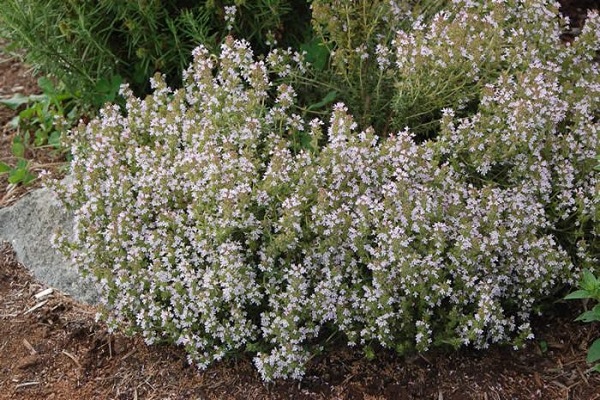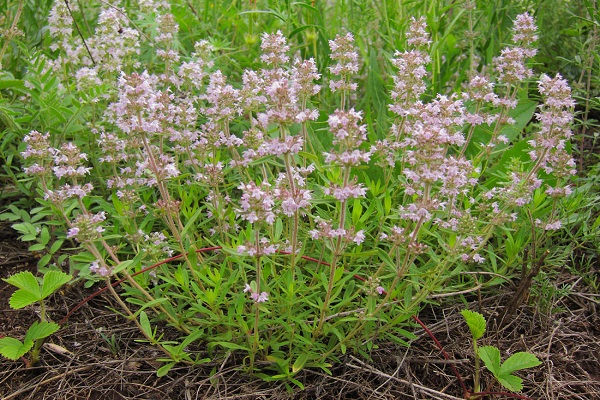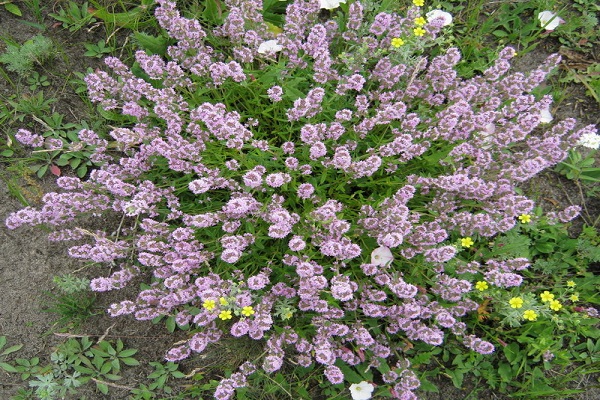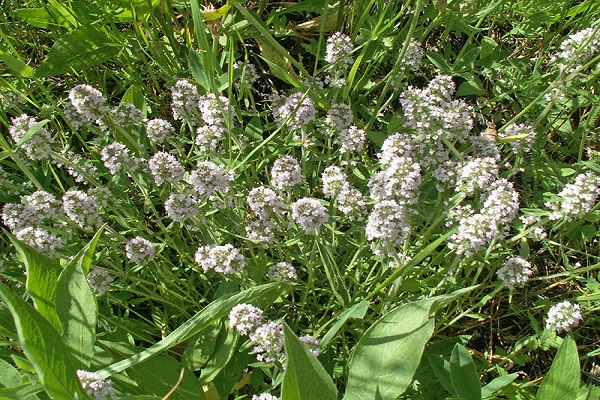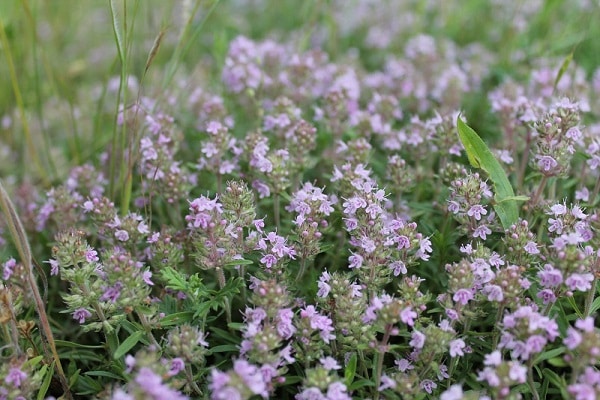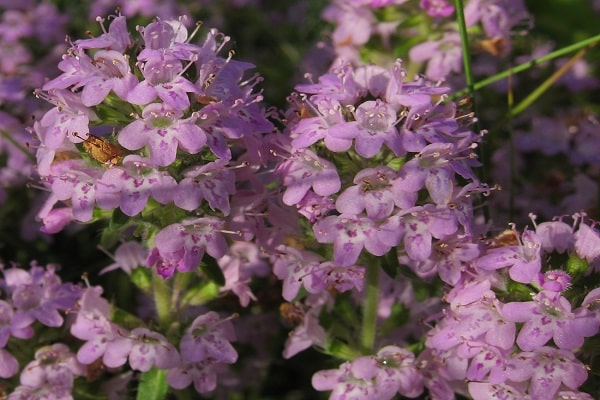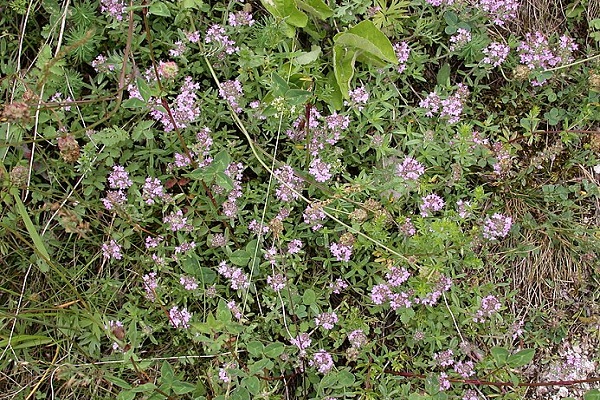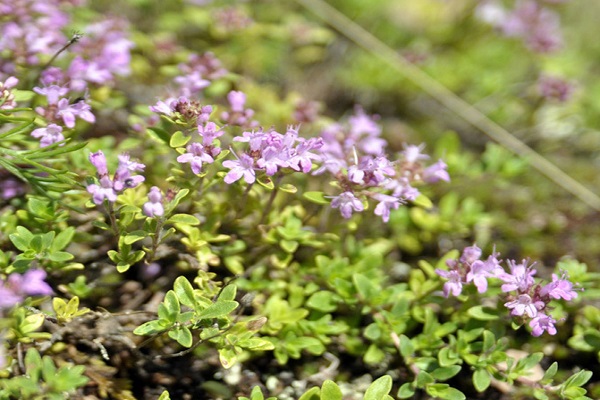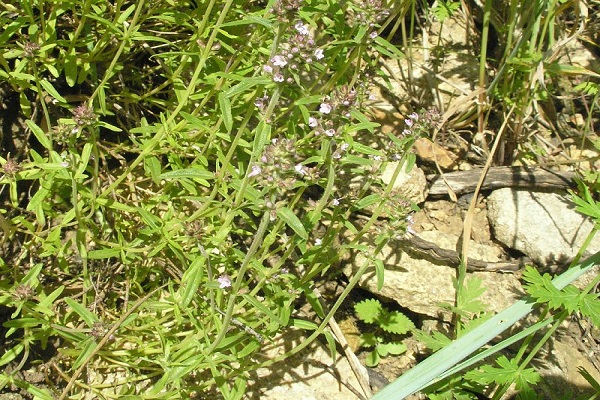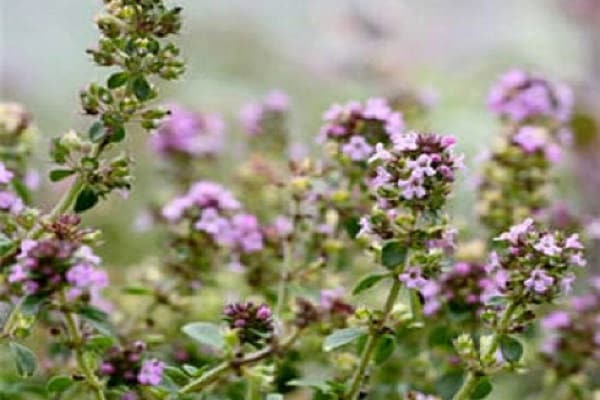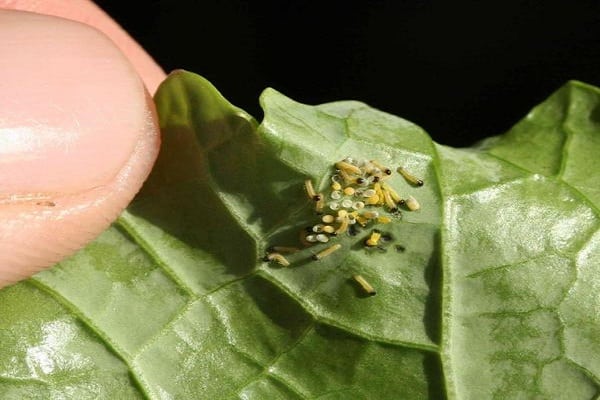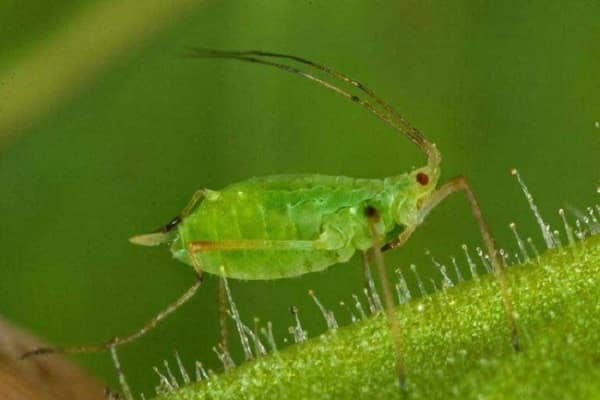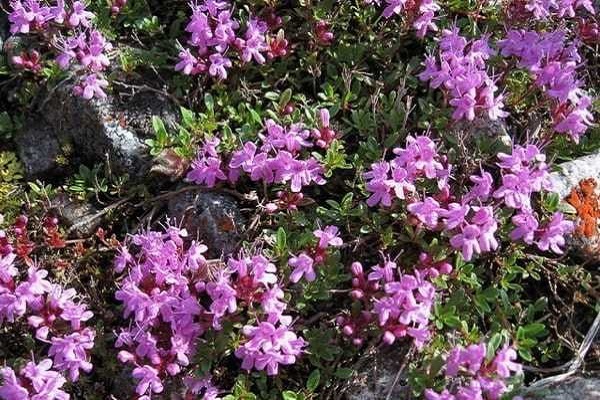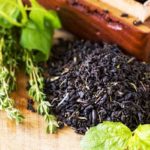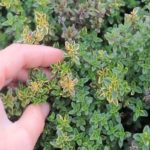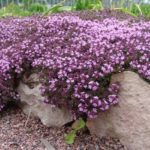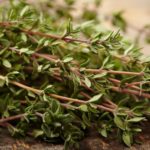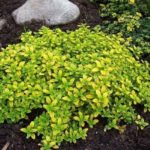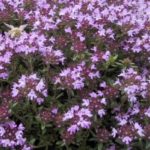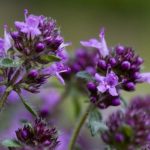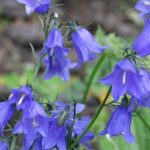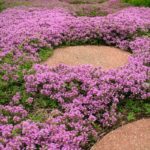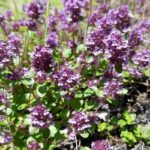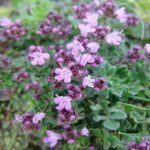There are more than 400 species of thyme in nature; creeping thyme and Marshall thyme, used in traditional medicine, are widespread in Russia. These are beautiful subshrubs with purple flowers in capitate inflorescences.
Features of the variety
Thyme is a subshrub 10-35 cm high, the leaf blades are oblong-elliptical in shape, the finished inflorescence has spaced rings of intermittent shape. The perennial produces aerial corollas of a pale lilac tone. After the end of lush flowering, the fruits ripen - miniature nuts.The total height of the bush is 10-35 cm. These are the general features of the life-giving thyme variety.
The period of beautiful flowering: from half of warm May to the end of sultry August. The distribution area of life-giving thyme is the Far East, Western Siberia, the European part of Russia, Belarus, Ukraine. The perennial prefers rocky slopes and is found among shrubs in illuminated forests, on picturesque edges, and spacious steppes.
Benefits of Marshall Thyme
This life-giving herb is often used in folk recipes. The above-ground part of the perennial is collected. Natural perennial infusions based on skim milk are used for diagnosed amenorrhea, in the presence of acute respiratory infections, and severe toothache.
In sunny Bulgaria, natural herbal infusions in the form of small lotions are used as an excellent wound-healing composition - against bad breath, in cases of diagnosed stomach cancer.
In Kyrgyzstan, a fresh infusion of life-giving thyme is drunk orally as a remedy for radiculitis, to quickly relieve spasms.
Externally, a decoction of fresh thyme is applied in the form of light lotions, aromatic baths are taken based on the life-giving infusion, and healing compresses are made. In Altai, people know that an aromatic infusion of thyme helps with severe headaches and fever. In the Middle Volga region, this healing agent is actively used as an expectorant during whooping cough, a progressive respiratory infection.
Marshall's thyme is used to make a light essential oil suitable for further use in perfumery and cosmetology; it is also used as an aromatic spice when frying fish.
Features of growing thyme
To grow this perennial, you don’t need to make any special efforts; any novice gardener can handle it. Fresh thyme tolerates dry summer and harsh winter conditions very well. In order for a perennial to grow and develop intensively, it needs a sufficient amount of moisture. Fresh thyme is unpretentious in terms of soil composition and grows poorly in clay soils with a high level of acidity.
Landing dates
In the garden plot, selected thyme seeds are sown in the spring and autumn. The optimal time for planting ripened perennial seeds is spring, after the end of frost. On the day of planting, the weather should be sunny and warm. To maintain perennials in apartment conditions, ready-made cuttings and seeds are planted in the ground at any time.
Preparing the landing site
Before planting seeds, the site should be prepared by performing the following steps:
- A hole is dug, the optimal size of which is 2 times the diameter of the pot.
- A suitable soil composition is prepared: soil and sand are mixed in equal proportions, and part of the finished mixture is poured into the pot.
- Carefully remove the finished seedling from the plastic pot and fluff up the strong rhizome.
- Place the thyme in a hole; the permissible depth for initial planting is the same as in a pot.
- Sprinkle the nutrient mixture into the hole, trample it down and water it generously.
Landing
During initial planting, unassuming thyme does not require special conditions. In order for a life-giving plant to grow and develop well in a new place, the following conditions are met:
- Choose the right place to place it.
- Observe the specified time frames for initial planting.
- Water and feed.
For initial planting, choose a sunny place not blown by cross winds. Thyme is afraid of constant drafts. The selected soil on the site for normal plant development is light, well-drained, with a neutral acidity level. If the soil in the garden plot where the initial planting is planned is heavy and has a high moisture content, then it is diluted with sifted sand.
Care
Caring for the unassuming thyme is simple; just follow the watering rules, periodically loosen the tree trunk, and weed the weeds.
Watering
Thyme is drought-resistant; it will not survive stagnation of moisture - the roots will begin to rot and be affected by various diseases. During the dry period, young thyme is provided with moderate watering; in dry spring and during active growth, it also needs moderate moisture. To avoid stagnation in rainy times, the tree trunk circle is sprinkled with fine gravel.
Top dressing
Thyme does not require constant addition of nutrients. Before initial planting, it is necessary to add high-quality humus to the selected soil. In this case, the seedling does not need additional feeding for a whole year. In late spring or early summer, a liquid mineral composition is added annually.
Diseases and pests
During vegetative development, the perennial is weeded, the tree trunk is loosened, and the delicate soil around it is mulched to prevent stagnation of moisture, which is so destructive for it. Fresh thyme emits an aroma that repels insects. If the basic rules of care are violated, the fragrant thyme may be attacked by pests:
- The meadow moth spoils fresh leaves and buds; when the slightest signs of damage appear, it is treated with an insecticide solution.
- Sandworm - affects the above-ground parts of the perennial. To fight it, poison baits are successfully used.
- The dangerous weevil prefers young greenery and fresh buds. The method of disposal here is similar, only additional treatment is done with potent insecticides.
- Aphids spoil fresh leaves, fragile stems, and die after careful treatment with potent insecticides.
By following all care instructions, you can grow healthy thyme, which is then collected for the winter.
Harvest and storage
When many purple inflorescences appear on the thyme, the collection and preparation of medicinal raw materials begins. The grass is collected during warm, dry weather, from morning to 5 pm. The plant must be dry from the dew, otherwise mold will begin to form on it. Immediately after collection, life-giving tea is made from the collected herbs. To do this, do not wait for flowering, because thyme leaves have a unique aroma.
Dry the collected material in a ventilated area, in the attic or veranda. After complete drying, the finished collection is packaged in cotton bags.

